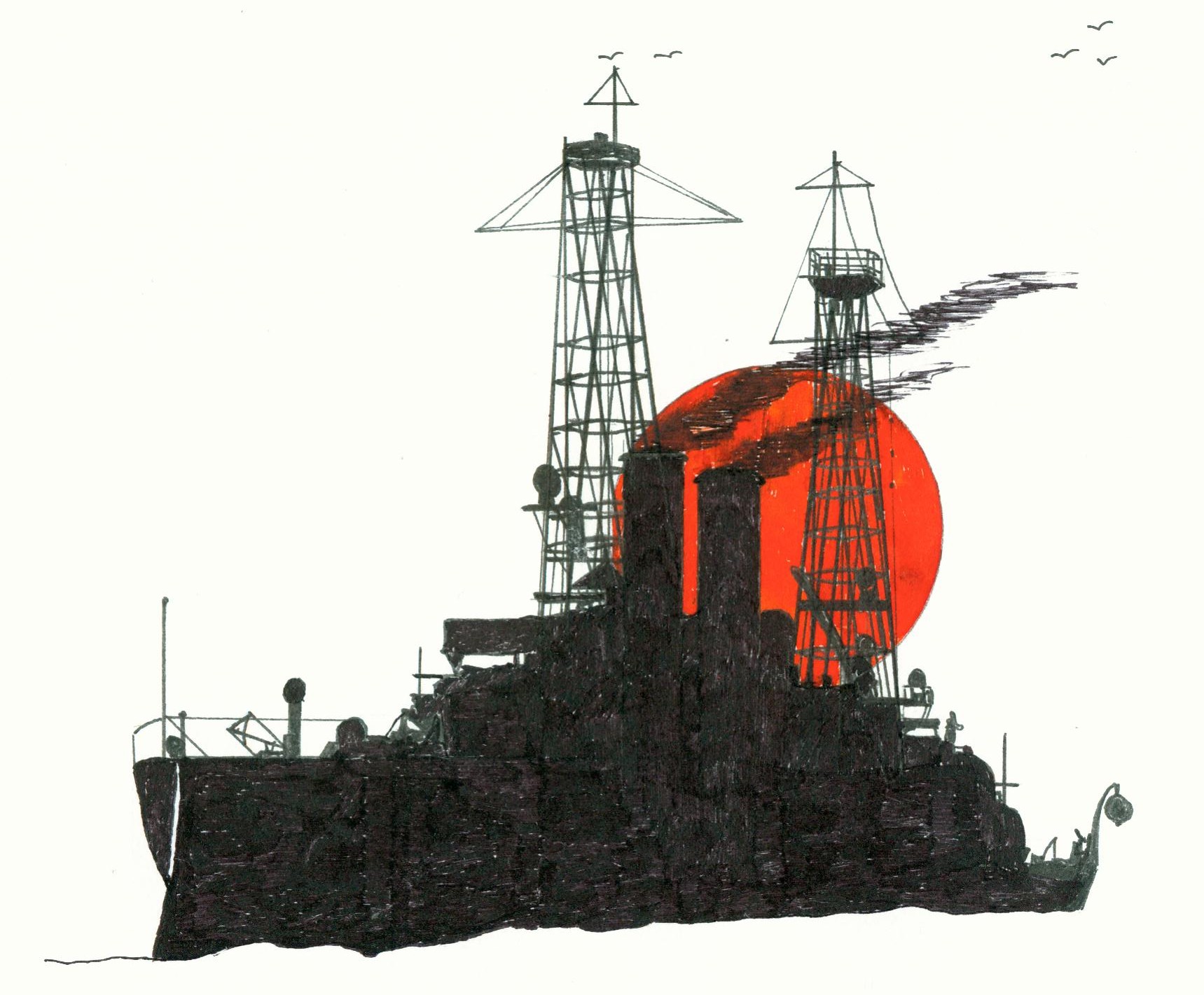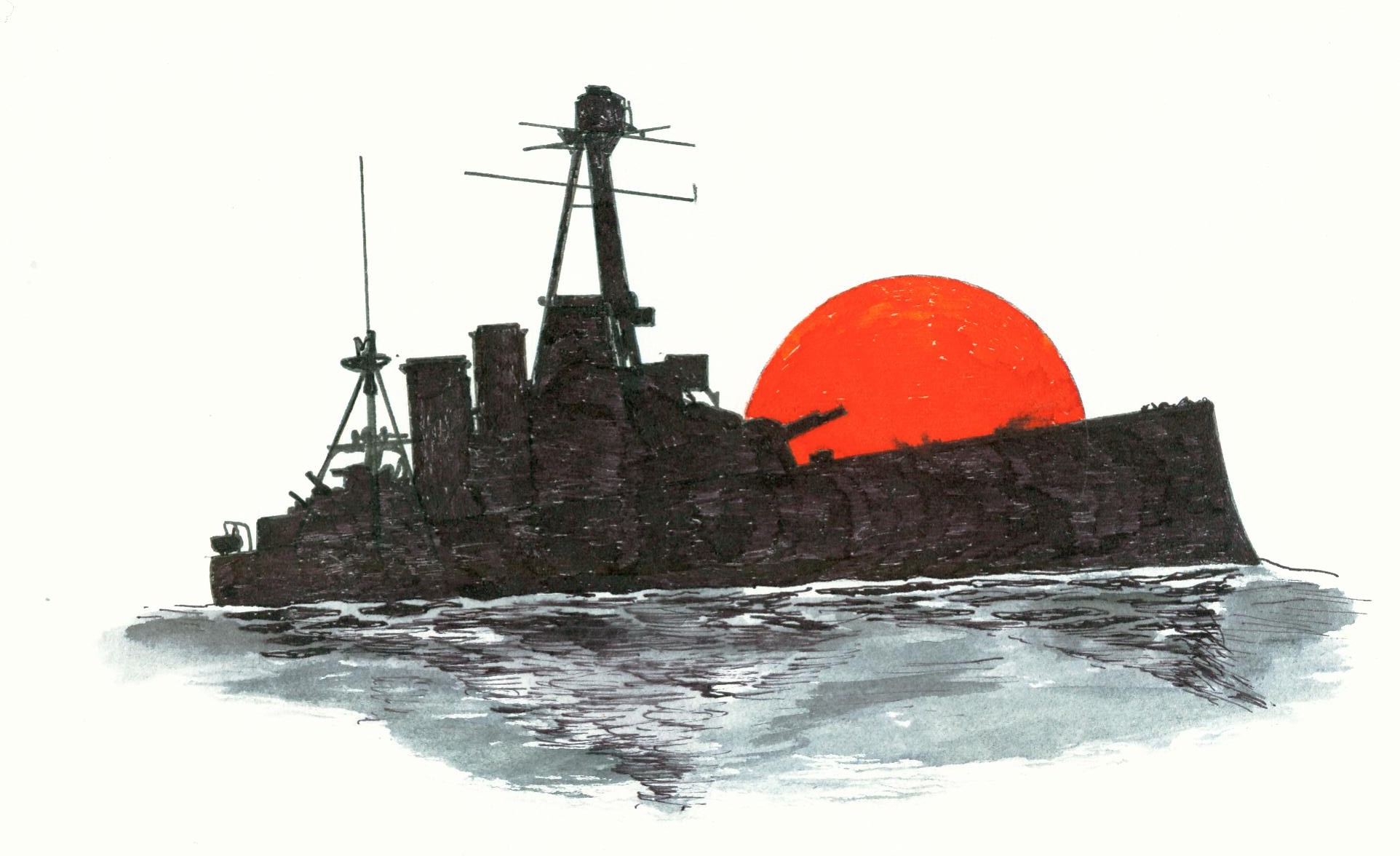Strength of the Turkish navy except for the Yawaz (the former German Goeben) dating from 1913 were available two old small cruisers, 1 gunboat, 3 destroyers and 24 vessels of none importance. (1)
Photo published in the Dutch magazine De Prins dated 7 December 1912 page 271 when she was part of the internationaal fleet off Constantinople to protect the foreigners.
The Greek navy consisted of 2 old American 15,000 ton American cruisers (2), a 10,000 ton cruiser from 1910 (3), 4 modern and 7 aged destroyers, 12 modern torpedo boats and 14 vessels of none of hardly any value for war purposes.
The Russian Black Sea fleet consisted of 2 armoured cruisers of 7,600 tons dating from 1915-1916, 2 destroyers, 2 torpedo boats, 4 submarines and 7 ships for specialized duties.
Notes
1. This battle cruiser of the Moltke-class was ordered on 8 April 1909 to be built at Blohm&Voss, Hamburg, Germany as the ‘H‘, laid down on 28 August that year with building number 201, launched 28 March 1911, commissioned 2 July 1912, handed over to the Ottoman Empire on 16 August 1914 and commissioned the same year as the Yavuz Sultan Selim, renamed Yavuz in 1936, decommissioned on 20 December 1950, stricken on 14 November 1954, sold to be broken up in 1971, towed to her breakers on 7 June 1973 and not earlier as in February 1976 the breaking up was finished.. With a displacement of 22,979 tons/22,616 long tons (design)-25,400 tons/25,000 long tons (full load) were her dimensions 186,6 x 30 x 9,2 metres and was she in German service armed with 5x2-18cm guns, 12x15cm guns and 12x8,8cm guns and 4-50cm submerged torpedo tubes. With her was also the small German cruiser Breslau handed over to the Turkish government and renamed Midilli.
2. This must be the battleship Kilkis and the Lemnos.
3. This must be the Georgios Averoff.
Photo published in the Dutch magazine De Prins dated 7 December 1912 page 271 when she was part of the internationaal fleet off Constantinople to protect the foreigners.
The Greek navy consisted of 2 old American 15,000 ton American cruisers (2), a 10,000 ton cruiser from 1910 (3), 4 modern and 7 aged destroyers, 12 modern torpedo boats and 14 vessels of none of hardly any value for war purposes.
The Russian Black Sea fleet consisted of 2 armoured cruisers of 7,600 tons dating from 1915-1916, 2 destroyers, 2 torpedo boats, 4 submarines and 7 ships for specialized duties.
The Turkish Yavuz Sultan Selime (ex-German Goeben)
The Greek Kilkis
The Greek Georgios Averoff
Notes
1. This battle cruiser of the Moltke-class was ordered on 8 April 1909 to be built at Blohm&Voss, Hamburg, Germany as the ‘H‘, laid down on 28 August that year with building number 201, launched 28 March 1911, commissioned 2 July 1912, handed over to the Ottoman Empire on 16 August 1914 and commissioned the same year as the Yavuz Sultan Selim, renamed Yavuz in 1936, decommissioned on 20 December 1950, stricken on 14 November 1954, sold to be broken up in 1971, towed to her breakers on 7 June 1973 and not earlier as in February 1976 the breaking up was finished.. With a displacement of 22,979 tons/22,616 long tons (design)-25,400 tons/25,000 long tons (full load) were her dimensions 186,6 x 30 x 9,2 metres and was she in German service armed with 5x2-18cm guns, 12x15cm guns and 12x8,8cm guns and 4-50cm submerged torpedo tubes. With her was also the small German cruiser Breslau handed over to the Turkish government and renamed Midilli.
2. This must be the battleship Kilkis and the Lemnos.
3. This must be the Georgios Averoff.




